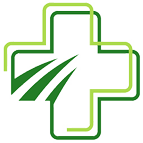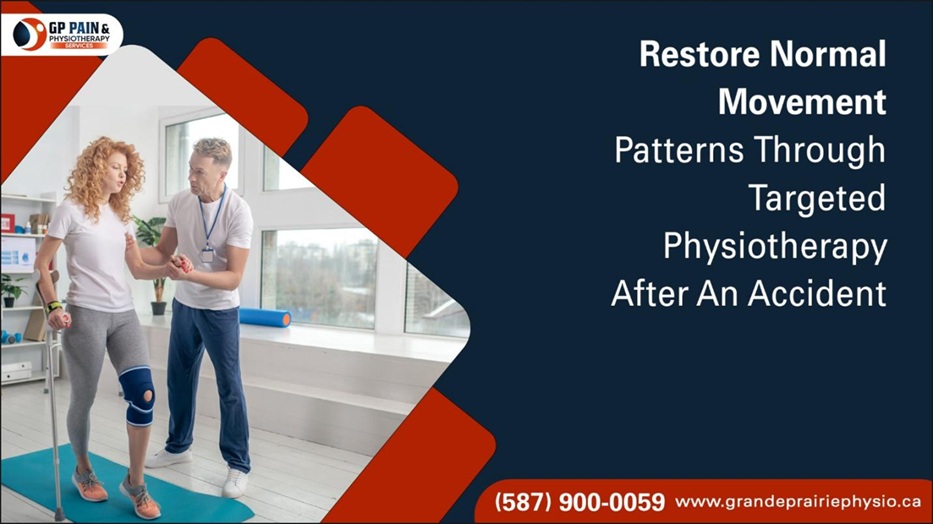A motor vehicle accident can disrupt the body’s natural movement patterns, even when injuries seem minor at first. Muscle guarding, joint stiffness, and pain often follow, leading to compensatory habits that affect posture, balance, and daily activities. Without appropriate intervention, these altered mechanics can result in long-term discomfort and functional limitations. Motor vehicle accident physiotherapy in Grande Prairie focuses on identifying and correcting these changes through tailored exercises and hands-on techniques. By addressing pain, restoring joint mobility, and retraining movement, physiotherapy supports effective pain management and helps individuals regain optimal physical function.
Why Movement Patterns Are Disrupted After an Accident
Post-accident compensation occurs when certain muscles or joints overwork to protect injured areas. This often leads to:
- Abnormal weight shifting while walking or standing
- Uneven spinal or pelvic alignment
- Over-recruitment of larger muscles while smaller stabilizers remain inactive
- Delayed muscle activation during basic movements (e.g., lifting, stepping)
These disruptions interfere with functional tasks such as walking, bending, and reaching and may contribute to secondary issues like neck strain, hip tightness, or nerve irritation.
Physiotherapy Techniques for Movement Pattern Restoration
1. Movement Assessment and Biomechanical Screening
Recovery begins with a thorough assessment to identify how the body is compensating after injury. Physiotherapists use a combination of visual observation, functional movement testing, and hands-on palpation to evaluate:
- Posture and alignment in standing and during movement
- Gait mechanics, including stride length, foot strike, and hip extension
- Joint range of movement, particularly in the hips, spine, and shoulders
- Muscle activation patterns and symmetry during exercises like squats or lunges
Common issues identified in this phase may include:
- Limited hip extension during walking, leading to reduced stride and lumbar overuse
- Decreased thoracic rotation, affecting upper body coordination and breathing mechanics
- Asymmetrical weight-bearing during squats or stairs
- Weak or delayed gluteal and core activation, which compromises trunk stability
The findings help physiotherapists develop a personalized rehabilitation plan, targeting the specific dysfunctions that limit natural movement.
2. Neuromuscular Re-Education
After an accident, the nervous system may “forget” how to activate muscles in the correct sequence. Neuromuscular re-education focuses on restoring these patterns to improve coordination and reduce compensations.
Techniques include:
- Facilitation drills: Hands-on cues or verbal guidance to activate underused muscles, like the glutes or deep core.
- Proprioceptive feedback tools: Using balance boards, laser pointers, or unstable surfaces to heighten body awareness and reinforce correct positioning.
- Motor control training: Low-load repetitive movements that encourage proper timing, such as bridging with core engagement or controlled leg lifts.
With repeated practice, the nervous system gradually re-establishes correct motor patterns, replacing inefficient movement habits that developed after the injury.
3. Manual Therapy: Joint and Soft Tissue Mobility
Trauma often leads to joint stiffness and soft tissue restriction, which limit the body’s ability to move freely. Manual therapy plays a crucial role in breaking these restrictions and restoring normal mechanics.
Common manual therapy techniques include:
- Joint mobilizations: Applied to areas like the cervical spine, hips, or ankles to improve joint glide and reduce stiffness.
- Myofascial release: Gentle, sustained pressure over restricted fascia to improve soft tissue pliability.
- Scar tissue mobilization: Especially important for post-surgical or post-laceration cases, helping to break down adhesions that limit tissue movement.
These interventions make movement smoother and more efficient, allowing for better performance in active rehabilitation.
4. Corrective Exercise Programming
Once movement coordination improves, the next step is to increase strength and endurance in muscles that support functional movement. This is achieved through progressive, targeted exercises aimed at restoring muscular balance and stability.
Examples include:
- Glute bridges and side-lying leg lifts: For improving lumbopelvic stability and correcting hip weakness
- Thoracic mobility exercises: Such as “open book” stretches and seated spinal rotations, to restore upper body movement
- Core stabilization drills: Including dead bugs, bird-dogs, and planks to reinforce trunk control
- Functional strength drills: Like lunges, step-ups, and sit-to-stands, simulate real-life activities while focusing on control and symmetry
Physiotherapists closely monitor form to prevent compensation and ensure exercises are appropriately challenging without triggering pain.
5. Gait Retraining and Functional Reintegration
Altered walking mechanics are common post-accident, especially in those with lower limb or spinal injuries. Gait retraining helps restore rhythm, coordination, and joint loading patterns to normal.
Strategies include:
- Treadmill training with visual or auditory cues to guide step timing and alignment
- Overground walking drills focused on posture, stride length, and weight shift.
- Step training and single-leg drills to correct asymmetries and improve transitions like stair climbing or stepping up
As patients progress, these retrained movement patterns are integrated into daily activities like lifting, squatting, reaching, and getting in and out of a car, bridging the gap between rehab and real-world function.
Monitoring Progress and Long-Term Strategies
Movement restoration is an ongoing process. Physiotherapists continually reassess to track improvements and adjust treatment plans accordingly. Key progress indicators include:
- Improved muscle engagement symmetry
- Greater joint range of motion under load
- More coordinated and efficient movement patterns
- Reduced reliance on compensatory strategies
As mobility and function return, patients transition from guided rehab to independent movement, equipped with the tools to maintain their gains and prevent future issues.
Move Forward with Confidence After an Accident
Targeted physiotherapy plays a vital role in restoring proper movement and preventing long-term issues after a collision. Through customized MVA physiotherapy, the body can relearn safe and efficient movement patterns. GP Pain Physiotherapy offers comprehensive motor vehicle accident physiotherapy in Grande Prairie to support recovery and improve daily function. Book your appointment today and take the next step toward healing.


